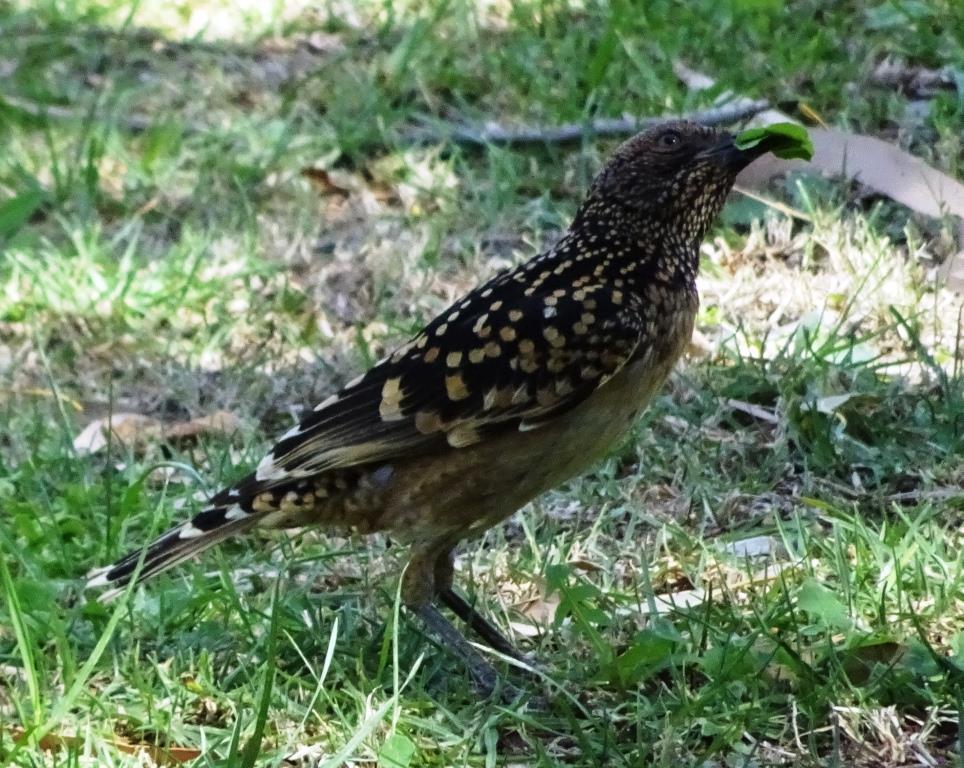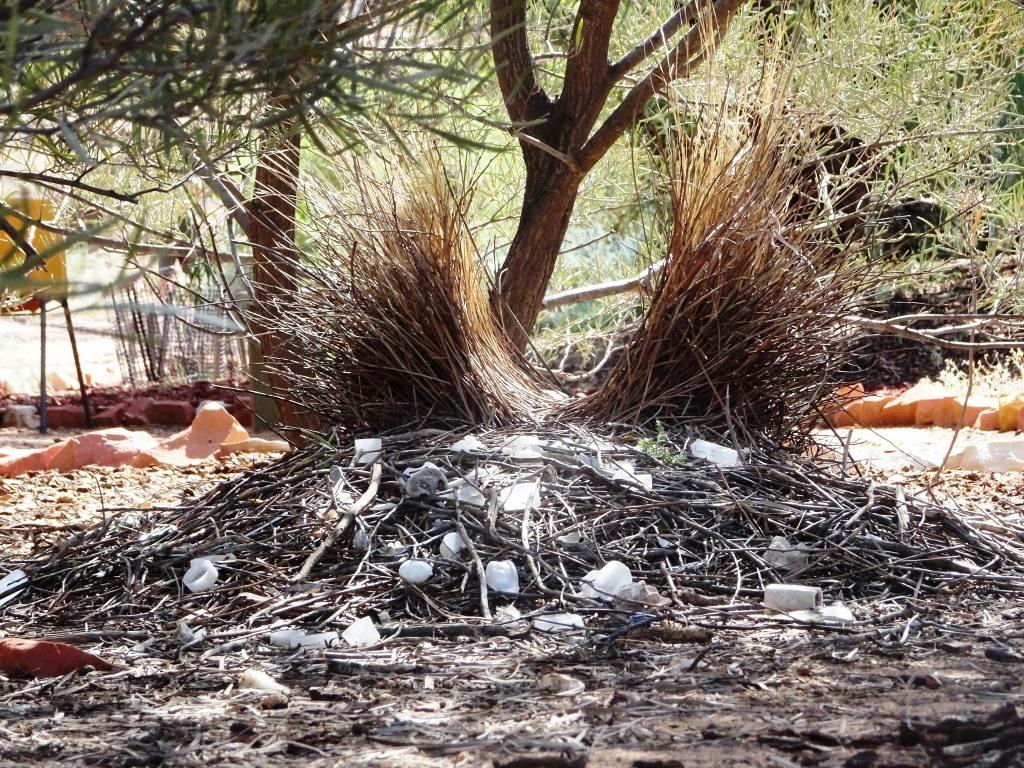
I feel like the Western Bowerbird (Ptilonorhynchus guttatus) is my kindred spirit. Quirky, hops around making silly noises while trying to look serious, and generally collecting all manner of things to make a nice home. When I first arrived in Central Australia, I was living in Mutitjulu at the base of Uluru and working for Parks Australia. One day while pottering around the house, I heard what sounded like a puppy making yappy noises. I went outside ready to greet the new dog that I assumed my neighbour had obtained. I was mystified when I got to the fence and there was no dog in sight. A few moments and some head-scratching later, I found the source of the carry-on. A somewhat chubby Bowerbird was sitting amongst the Arnguli bush having a laugh with its call that is reminiscent of a broken motor. A mimic!
In my time at Uluru-Kata Tjuta National Park, I was lucky to work with a supervisor that was as enthusiastic about bird antics as I am. He told me stories about the local birds and encouraged me to visit Olive Pink Botanic Garden (a long-time Land for Wildlife member) as there was a bower (hence the name!) there that was well-tended and a must-see. I fulfilled my promise to do so and snapped a pic of the bower within a few days of arriving in town.
The species is currently accepted as Ptilonorhynchus guttatus, however has been known in the past as Chlamydera guttata, with the word ‘guttata’ meaning spotted and referring to the plumage. They can be found throughout central Australia and within an arid central strip over to the west coast. There are eleven species of Bowerbird found in Australia: the Tooth-billed Bowerbird (Scenopoeetes dentirostris) and Golden Bowerbird (Amblyornis newtonianus) in north-eastern QLD, the Regent Bowerbird (Sericulus chrysocephalus) and Satin Bowerbird (Ptilonorhynchus violaceus) of the mid-east coast, the Spotted Bowerbird (Ptilonorhynchus maculatus) of inland eastern Australia, the Great Bowerbird (Ptilonorhynchus nuchalis) of northern Australia, Fawn-breasted Bowerbird (Ptilonorhynchus cerviniventris) of Cape Tribulation in FNQ, and our local, the Western Bowerbird. There is also the Spotted Catbird (Ailuroedus maculosus) and Black-eared Catbird (Ailuroedus melanotis) in north-eastern QLD, and the Green Catbird (Ailuroedus crassirostris) along the eastern coast of Australia. Of these species, nine are endemic to Australia, with only the Spotted Catbird and Fawn-breasted Bowerbird found in New Guinea as well.
The Bowerbird is famous for building a bower, a structure made from sticks that is used to display for females. Within Australian species, there are avenue designs (as in the Western Bowerbird and others of the Ptilonorhynchus and Sericulus genus), court designs (Scenopoeetes), and maypole (Amblyornis). The Catbirds do not produce a bower, despite being closely related species. The bowers of the Western Bowerbird are decorated with a variety of objects, usually green or white in colour (though other species have different colour preferences), such as shells, pebbles and bones. Near human habitation, man-made objects such as bottle caps, pegs and other plastics are often prized decorations. When native figs are fruiting, they are removed from trees while still green and used to decorate a bower.
The Western Bowerbird has a splash of pink on the nape of the neck known as a nuchal crest, which shimmers in the right light. Males and females are similar, with a slightly longer tail in the female. The male is polygamous and will mate with several females, leaving them to tend the nest (located away from the bower). As opposed to the bower, the nest itself is a shallow cup of twigs and sticks, housing a couple of buff coloured eggs with a scribbly pattern.
The bower is constructed and decorated by the male alone. He will advertise the bower with calls and performs ritual dances in the presence of a female. Some objects will be picked up in the bill and shaken around to display to the female. On one occasion, I saw an opportunistic male pick up a green leaf in the presence of a female and use it to display as he was away from the bower at the time and didn’t want to miss a trick. So what about the puppy? The Bowerbird is a great mimic! In the years of living in Central Australia, I’ve heard these cheeky birds copy a Cat meow, mimic Whistling Kites and do a poor impression of an Australian Ringneck. It will learn calls of other birds and use them to display and possibly also to want others off a territory. If you were a small bird, wouldn’t you stay clear of a bird bath that was being visited by a Whistling Kite? With several Bowerbirds visiting the yard to use the bird bath every day, you would think their antics would become old hat. But still, I find them hilarious. And it seems only fitting that I dedicate an article to them before I scoot out of their neighbourhood. Goodbye, my kindred spirit!

Categories:
Bird, Bird Watching, Native Fauna, Nest, Olive Pink Botanic Garden